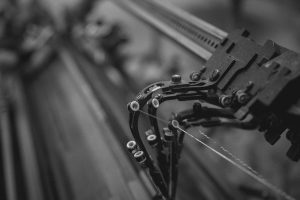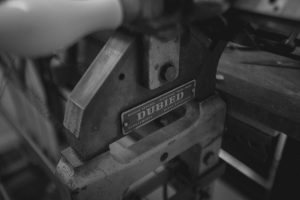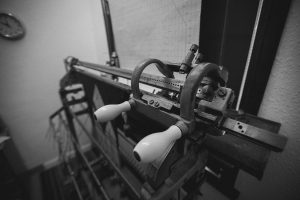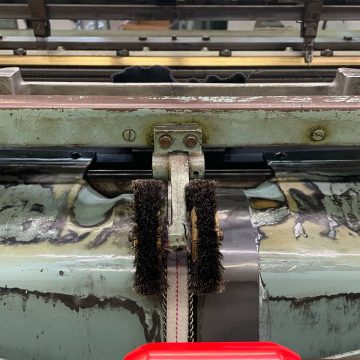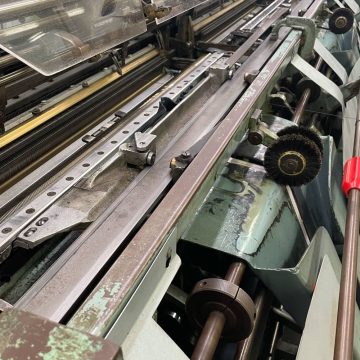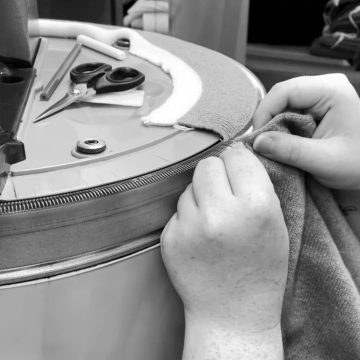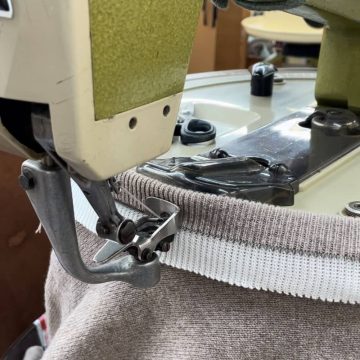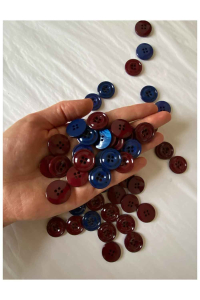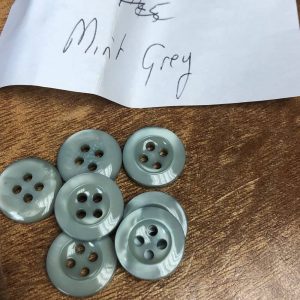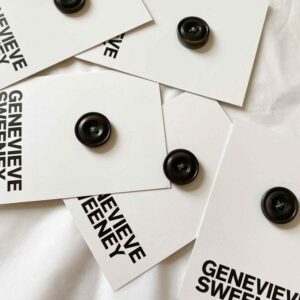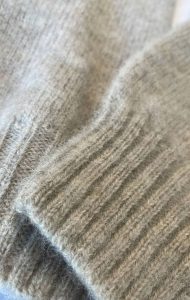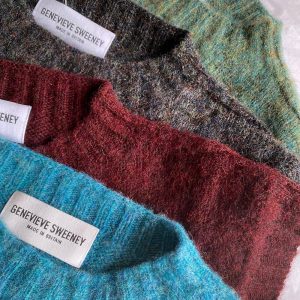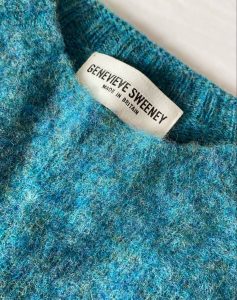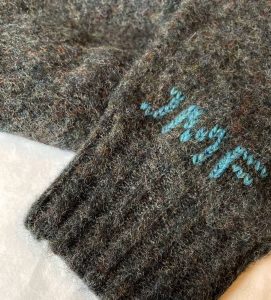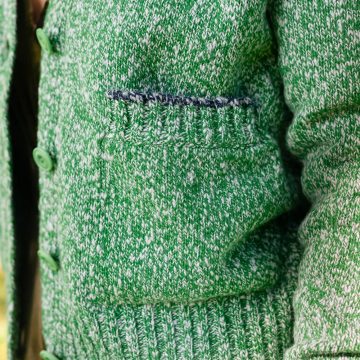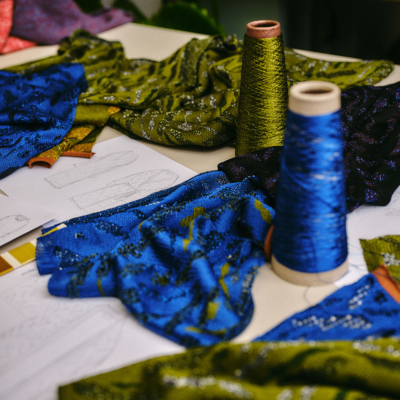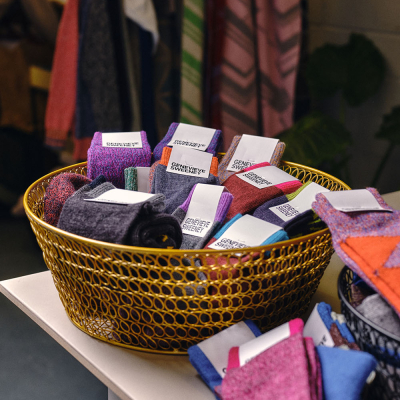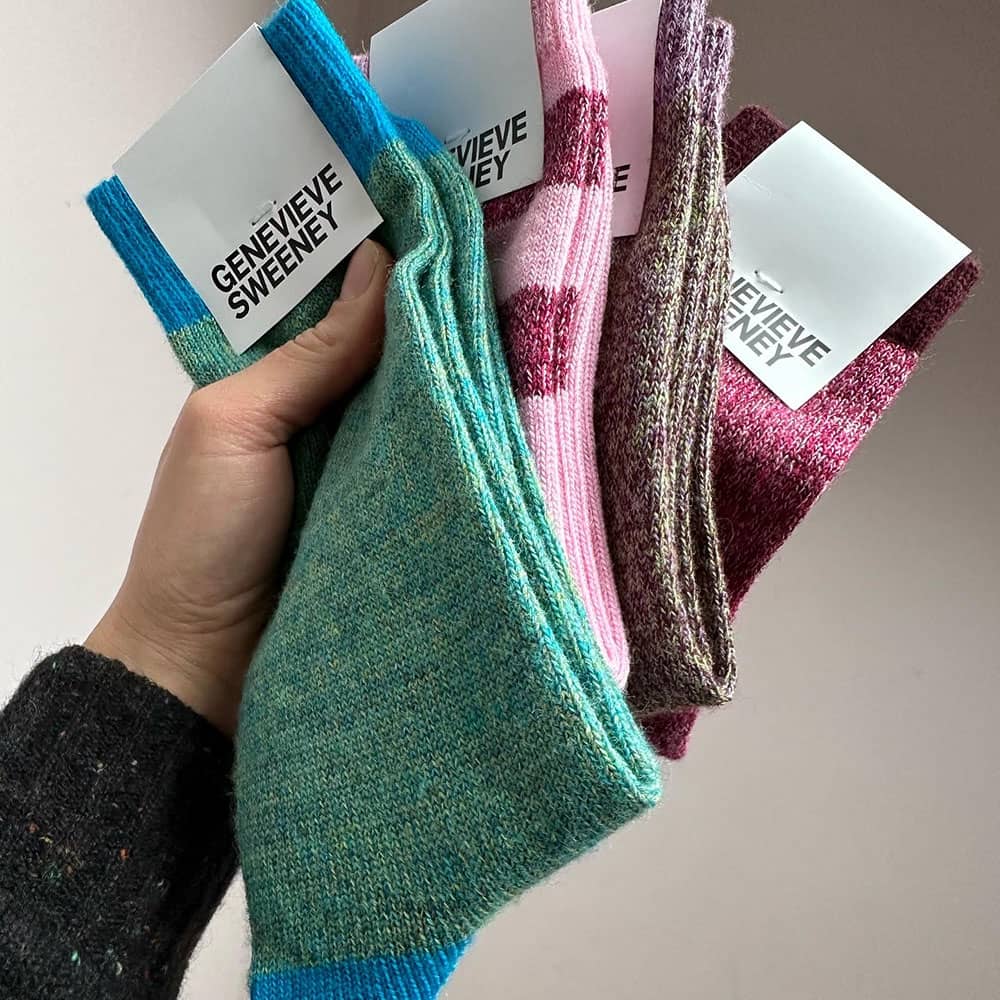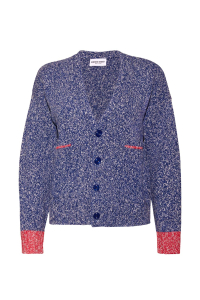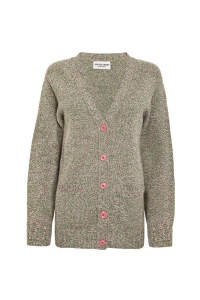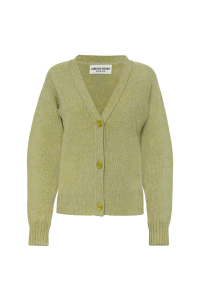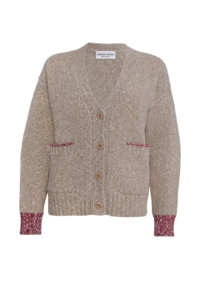GS Journal
Keeping British Crafts Alive
Heritage is important to me as a British knitwear designer. It is the heart of the knitting industry and what put the UK on the map to make prized knitwear for hundreds of years. I work with hand-selected mills and factories across the U.K, collaborating with those that adhere to time-honoured crafts that have been passed down through generations. There is a rich history of knitting in the British Isles, particularly in the Scottish islands, Yorkshire, Cornwall and the Channel islands; and I want my designs to reflect that.
Although there have been incredible innovations with knitting machines, my passion lies with hand intarsia and fully fashioned hand-flat knitting. Nothing can replicate the high quality and intricate attention to detail that is achieved with skilled hands. I launched Genevieve Sweeney to celebrate and champion UK manufacturing through heritage crafts such as hand intarsia, yarn spinning and innovative methods, always with responsible design. Read on to discover more about some of my favourite traditional techniques.
Knitting on Traditional Machines
It is important to me that my garments are knitted on traditional machines, to help support heritage crafts that are being fazed out by new, high-tech machines. The Fidra sweater is a perfect example of slow fashion and British manufacturing. The body and sleeves of the sweater are knitted on a Bentley Knitting Frame Machine in my factory in the Scottish Borders. This machine can knit eight panels at one time whilst individually fashioning each panel. The placket and collar is knitted on a hand-operated Dubied machine, which is attached to the body after it has been linked and milled.
Here are a couple of photos of the amazing Bentley knitting machine.
My geometric socks (including the Serora, Sia, Sigi and Selina) are knitted using a traditional intarsia sock machine. This incredibly rare machine allows you to create patterns without loops on the inside. The Serora spiral stripe and Sigi zigzag stripe are great examples of how you can create a seamless pattern and colour block, combining a traditional machine with a modern design twist.
This technique is also seen in the Leyden geometric lambswool sweater.
Conventional Linking
One of my personal favourite techniques is conventional linking: the method of joining together the edges of individual pieces of a garment. Using a linking machine, the knitted fabric is placed onto the machine, placing one stitch on one needle, creating a virtually invisible seam that looks almost seamless and is more comfortable than a bulky seam sewn by a machine. The end result is a running stitch on the outside and a chain stitch on the inside to secure the piece of knitwear together. This traditional craft is time-consuming, labour-intensive and highly skilled, involving an acute attention to detail and focus. Perfecting this craft can take up to 18 months, and those who learn linking skills are in high demand – it is incredibly hard to find linkers, as it is sadly a dying art. Precision, patience and seriously good eyesight are needed, especially when linking fine, dark coloured knitwear. You can watch some videos of this beautiful art on my instagram here.
Milling
To create the highest quality, softest knitwear, the traditional skill of milling garments has been passed down through generations. The purity of Scottish water washes and uniquely softens the woollen yarn, bringing the fibres to life while showcasing their unique characteristics. Millers are expertly trained, and know by their knowledge and their handles of the yarns how much they need washing.
Hand-made Buttons
British button-making is a centuries-old craft which was almost lost when the last remaining button makers closed their doors in 2012. Courtney & Co., who we are delighted to source our buttons from, launched just a year later, aiming to revive the craft of button-making while focusing on using sustainable materials to make their buttons. Every step in the process of making their buttons is carried out in-house, including dyeing. Buttons are made from Corozo and three types of Codelite®: solid, pearlescent and cornu (an alternative to real horn). The processes of turning, dyeing and polishing their buttons have been learnt over time from retired button-makers, and include time-intensive polishing techniques using natural materials such as maize husks, walnut shells and pumice.
Discover more about how the GS buttons are made here.
Yarn Processes
I source my lambswool and cashmere yarn from one of the oldest Scottish yarn mills, on the shores of Loch Leven. The water’s natural purity and softness help to open up the natural fibres of the wool, resulting in incredibly high quality. The fleece is dyed before it is spun using environmentally-friendly dyes, so the water can be returned to the Loch after the dyeing process. The mill uses traditional machinery from the 1950’s and 60’s to dye, card, wind and spin the fleece, producing consistently high-quality yarn. The machines are slower than more contemporary equivalents, but are also more gentle, putting quality before quantity.
Read more about the yarn mill here.
Brushing Technique
To create a relaxed, felted quality that man-made tools simply cannot match, wool is brushed with dried teasel thistles. This is a time-honoured and completely natural technique used for softening yarn; elongating, lifting and pulling its fibres. The technique is mainly used for Supersoft Shetland knitwear. Discover the GS Brushed Wool Collection here.
Recent Posts
GS Collections
GS Sock Subscription
Subscribe and each month you'll receive a surprise pair of socks showcasing Genevieve's signature blend of premium yarns and contemporary patterns in seasonal, statement colours.

